One of the biggest reasons people don’t meditate, or teach meditation to children, is because they think they don’t have time for it. There is such a misconception that mediation requires at least an hour of time, preferably spent on a secluded beach or mountaintop.
Fortunately for you (or unfortunately if you were hoping for an excuse for a beach or mountain getaway) meditation can be done just about anywhere and it is quite easy to fit little moments of meditation and mindfulness into your child’s day. In fact, the more times you find to have your child practice mindfulness, the easier it becomes and the more peaceful they will feel. Meditation has a cumulative effect when practiced over time.
There are so many ways to bring meditation into your child’s day. In this article we will touch on a few.
Mornings can be tough. Kids who haven’t slept enough might wake up groggy and grumpy (meditation can help with that.) And there’s always a bit of chaos in the morning no amount of planning ahead can totally avoid.
Waking up is a perfect time to get children’s days off to a peaceful start. One way to bring mindfulness into the day is with setting intentions and the second way is in an activity your child does every day: brushing their teeth.
Starting the morning with a short meditation or mindfulness practice is a gentle way to begin the day. While they are still snug under the covers, invite your child to stretch and take a few long, slow, deep breaths.
Adding scent and sound to the morning are also ways to help children center themselves and get grounded in a new day. Using a few drops of an essential oil in a room diffuser each morning is a good practice. Your child can focus on the smell in the mist and then associates that scent with morning. Citrus or orange essential oils are perfect sunrise scents as they are relaxing and invigorating at the same time.
Some children may like to start the day with gentle music playing in the background (playing the same track each morning acts as an aural cue that it is time to get going.) Smelling orange oil and hearing a particular song, gives kids a soothing sense of predictability of what comes next…getting ready for a new day.
After taking a deep breaths and enjoying the scent and sound around them, invite your child to set an intention for the day. They can do this while they are still in bed, before their feet hit the floor. Intentions are powerful: the set the stage and mood for the day, and your mind often works hard to make your intention a reality.
“I will be kind to myself.”
“I will expect to have a good day.”
“I will look at things positively.”
After setting intentions for the day, it’s time for a practice you probably didn’t know could be meditative: teeth brushing.
Some kids love brushing their teeth, others not so much, but turning teeth brushing into a mindful experience is quite easy to do. Meditation and mindfulness are really about being aware of things as they are…sights, sounds, tastes, smells, and feelings. Teeth brushing is very sensory.
Invite your child to focus on all the different sensations of brushing their teeth. What do they see?What color is the toothpaste and their mouth rinse? Neon green or cotton candy pink? How does the toothpaste feel when they squeeze it out of the tube? Soft and squishy? Or did they have to push hard to get the last of the product out?
What can they hear? The sound of the water? The drip of the faucet? What are they tasting? Bubblegum toothpaste or cool minty mouthwash as they swish? Can they smell the toothpaste and the mouth rinse? How does it smell? Minty, sweet, or like cinnamon?
How does teeth brushing feel? The movement of the toothbrush bristles touching their teeth, tongue and gums? The feeling of the water in their mouth?
The point of mindful teeth brushing is to get your child to become aware of things right as they are in the present moment instead of brushing their teeth on autopilot. This awareness of the here and now can help kids feel grounded and reduce some of the anxiety that morning can bring as children might begin worrying about the day ahead.
Obviously each time your child brushes their teeth they will not focus on every scent, sound and taste. And some mornings they may definitely not be in the mood for mindful teeth brushing. Trust us, we’ve been there. But on good mornings, when the day is off to an easy start, making them become aware of the different sensory aspects of teeth brushing will help them become more aware, and reminding them of this, every once in a while, when they are receptive to it, is a good way to encourage mindfulness
There are so many ways to practice mindfulness throughout the day. Kids can say affirmations to themselves while riding on the school bus, or during quiet time at school. They can listen to mini-meditations in the car or while waiting at a doctor’s appointment.
Transition times can be tough for some kids, and are an especially good time to introduce mindful meditative practices. Using music or sound can help transition from one activity to another, and adding a few seconds of 1-2-3 breathing (3 long, slow, deep breaths) can help them feel more calm and peaceful.
Playtime can also be a time for mindfulness. If your child is doing arts and crafts they can notice all the sensations of the medium they are working with. Do the crayons feel smooth against the paper? What colors are they using to paint or color? How does the modeling clay feel in their hands…cool and slippery or soft and squishy? How does the clay smell? What color is it? If they are building with blocks, what is their texture? Are there pointy or rounded edges? Art, in and of itself is a very mindful endeavor, and children often lose track of time as well as their worries, when they are engaged in creative play.
Reminding children to focus on their activities mindfully, even for a few seconds throughout the day helps them stay more in the moment. By staying in the moment they are really present, which helps them stay grounded in the here and now. Your gentle, reminders will get them thinking, on their own, of being mindful of sights, sounds, smells, tastes and feelings in their environments, without your prompting. Remember, meditation is like a exercising a muscle, and the more often your child uses it, the stronger it will become.
Evening is a perfect time for meditation as it helps children relax and get ready for sleeping peacefully. You might want to begin their evening routine by letting them spend some quiet time in a cozy spot to gently transition from daytime to nighttime.
Bath or shower time can be an especially mindful and sensory time for kids. Like brushing their teeth and creating art, taking a bath or a shower involves all the senses. Kids can relax and feel the temperature of the water. Bubbles may add a frothy texture to the water. A shower might feel like a waterfall, washing over their body.
An essential oil dropped into the water, or the fragrance of the soap or body wash, give the bath a calming smell. Kids might see clear water, or colored water, from bubbles or bath bombs. In addition to hearing the sounds of water, kids might enjoy listening to a soothing song that is only played as part of their bath routine. This song is also like an aural cue that helps them feel peaceful.
Getting into bed can be hard for kids. That’s why they often need one extra drink or trip to the bathroom. To help settle kids into bed, make their tuck-in mindful and soothing. Remember, if your child likes scents, using an essential oil at bedtime adds to another mindful, calming layer. Lavender and chamomile are good bedtime choices.
When children get into bed they can notice how the sheets feel on their skin…are they cool and silky or flannel and fuzzy? They can feel the fluffy softness of a blanket, and the fur of their favorite stuffed animal. Invite them to notice the softness of the mattress and how the bed supports them. They can take a few minutes to listen to all the sounds they hear in the quiet…the ticking of a clock, the hum of a heater, and the whisper of the wind outside their window.
Feeling the feelings and hearing the sounds grounds them in the place they are in, and gives them a sense of calm. Everything is as it should be. They are safe. All is well.
Since the human mind is predisposed to focus on the negative, inviting children to find three things they are grateful for is a gentle way to remind them to focus on the good things in their day. They also need to think about why they are grateful for each thing.
This time to reflect on why they are thankful for something is very calming. Instead of just rattling off a list, the child needs to pause and think about what it is about that thing that makes it so special in their life. Cultivating real gratitude has many healing benefits like reducing stress, improving sleep, building resilience, increasing mood, and fostering hope for the future.
Tucking little ones into bed with their favorite guided story meditation is a calming addition to a bedtime routine. Guided story meditations from Wee Meditate weave meditation practices like breathwork, body scans, loving-kindness, etc. into imaginative stories that gently guide kids into relaxation and peaceful sleep.
Day or night, or sometime in between, we have content to bring peace to your child’s day. A membership to Wee Meditate gives your child access to all our growing library of guided story meditations, bedtime stories, music and more.
Sign up or log in to start listening and make meditation a part of your child’s mindfulness routine!

